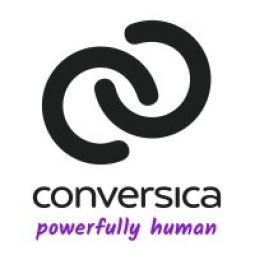Technology Category
- Application Infrastructure & Middleware - Data Exchange & Integration
- Application Infrastructure & Middleware - Middleware, SDKs & Libraries
Applicable Industries
- E-Commerce
- Recycling & Waste Management
Applicable Functions
- Sales & Marketing
Use Cases
- Demand Planning & Forecasting
- Time Sensitive Networking
Services
- System Integration
About The Customer
KEMP Technologies is an industry leader in advanced Layer 2 – 7 Application Delivery Controllers (ADC) and application-centric load balancing. The company has over 40,000 worldwide customer deployments, serving enterprises and organizations that demand highly available, scalable, and secure e-commerce, web, and collaboration applications with the best value-based price and performance. KEMP's global presence and success in the market have led to an increase in sales leads, necessitating a more efficient and effective lead management system.
The Challenge
KEMP Technologies, a leader in advanced Layer 2 – 7 Application Delivery Controllers (ADC) and application-centric load balancing, faced a significant challenge in managing its growing number of sales leads. As the company's success in the market grew, so did the complexity and time-consuming nature of lead management. The company found it increasingly difficult to engage and nurture web visitors to determine their interest and intent, optimize lead qualification via marketing automation, and increase ROI on lead acquisition. The challenge was further complicated by KEMP's global presence, which introduced geographic and seasonal hurdles. It became impractical to hire enough sales reps to cover raw leads in all regions over all peak periods. The company needed a solution to automate nurturing and engagement with web leads beyond simple one-to-one email.
The Solution
KEMP Technologies turned to Conversica, a leading provider of Intelligent Virtual Assistants for business, to address its lead management challenges. The company implemented Conversica's AI Assistant, Olivia, to engage with incoming leads, particularly those arriving via their 'freemium' product's separate website. Olivia was also used to reengage older and dormant leads. Recognizing the potential of Conversica to complement their marketing funnel and automation suite, KEMP integrated it with their Salesforce, Marketo, and marketing analytics systems. This integration provided KEMP with end-to-end visibility of every touchpoint, reduced the wait time for follow-up, and allowed the company to see exactly where the lead was in the buyer journey. The AI assistant excelled at engaging in human-like conversation, enabling the sales teams to focus on Marketing Qualified Leads that have shown interest and intent further down the buying cycle.
Operational Impact
Quantitative Benefit

Case Study missing?
Start adding your own!
Register with your work email and create a new case study profile for your business.
Related Case Studies.

Case Study
Water Treatment Energy Management
Water pumping, treatment and conveyance are among the largest energy and cost outlays for many local and regional municipalities. Electricity time-of-use rates and peak pricing tariffs are driving those costs even higher. This case study describes how Monterey Regional Water Pollution Control Agency (MRWPCA) implemented a process data monitoring and control solution in order to analyze and optimize energy use, reduce deployment costs and save operational expenses.

Case Study
Digital Transformation of Atlanta Grout & Tile: An IoT Case Study
Atlanta Grout & Tile, a Tile, Stone & Grout restoration company based in Woodstock, Georgia, was facing challenges with its traditional business model. Despite steady growth over the years, the company was falling behind the web revolution and missing out on the opportunity to tap into a new consumer base. They were using independent software from different vendors for each of their department information and workforce management. This resulted in a lot of manual work on excel and the need to export/import data between different systems. This not only increased overhead costs but also slowed down their response to clients. The company also had to prepare numerous reports manually and lacked access to customer trends for effective business decision-making.

Case Study
Pima County takes significant steps in preserving water source
Pima County is facing the following challenges: - Management of more than 60 million gallons of sewage each day to support the region’s population of more than 1 million people. - To take immediate action when alarms sound alerting operators to issues within the plant The solution should be able to enable the following feature: - To ensure capture of institutional knowledge of current workforce for effective training of future operators - To employ an effective Situational Awareness strategy enabling personnel to effectively understand and address operations of the facility - With assets spread out over more than 700 miles, operational management is difficult

Case Study
IFFCO Boosts IT Performance and Innovates Agriculture with Oracle Cloud
Indian Farmers Fertiliser Cooperative Ltd. (IFFCO), the world’s largest manufacturer and marketer of fertilizers in the cooperative sector, was facing several challenges in its quest to innovate and improve the livelihood of farmers in India. The organization had recently launched a new product, nano urea, which brought new demands to IFFCO’s cloud computing needs. The organization needed a reliable cloud vendor to support the processes of 6–7 new manufacturing plants during the upcoming year, enhancing its production capability 300–350 million bottles of nano urea to meet increasing demand. IFFCO’s cloud adoption was driven by a need to innovate. The organization wanted capabilities for a dynamic business that can adapt to the changing needs of the market while growing fast. However, it was inhibited by rigid on-premises data center deployments and the overhead of maintaining legacy systems. IFFCO wanted to apply the elasticity and availability of cloud for improving overall performance of applications at lowest possible operational overhead. Lastly, IFFCO needed to provide the benefits of its technology to all its stakeholders, including employees, members, transporters, and farmers, some of whom have limited literacy. To accommodate all stakeholders, IFFCO wanted to add a voice interface to its applications.









